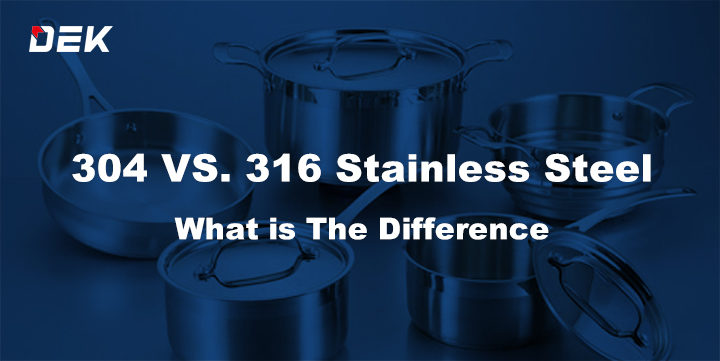

This, however, is not possible when it comes to the 300 series stainless steel. To strengthen carbon steel, it has to be subjected to heat treatment. Instead, it relies on its metallurgical structure for its robustness. Stainless steel doesn't obtain its strength from the carbon component. The carbon content, on the other hand, is relatively lower at a maximum of 0.08 percent. Similarly, stainless steel is majorly comprised of iron, but the chromium level must be at least 10.5 percent. A higher carbon component means more robust steel.

The typical carbon steel is made up of at least 95 percent iron and up to 2 percent carbon. While aluminum is light, it has limited corrosion resistance in seawater and requires significant maintenance. What Makes Stainless Steel Stand Out from Other Alloys? That's why this metal displays a higher resistance to corrosion by salty water. Another variant, Grade 316 or UNS 31600, comes with an additional 2 percent molybdenum. It is a primary alloy comprising 18 percent chromium and 8 percent nickel, hence the tag' 18-8 alloy'. Grade 304, otherwise referred to as the UNS 30400, is the most popular of Austenitic or the 300 series. Stainless steel can, in fact, rust and corrode if continuously exposed to saltwater or other corrosive conditions over time. However, this passive layer does not make stainless steel immune to corrosion. This is why some grades of stainless steel are better at resisting corrosion from saltwater than others. The Chromium within stainless steel forms a thin oxide layer to the surface, referred to as the 'passive layer.' The corrosion resistance of stainless can be improved by adding more Chromium, leading to a more robust protective passive layer. The most important element within stainless steel when it comes to corrosion resistance in general, is Chromium. The American Iron and Steel Institute (AISI) recognizes more than 50 grades of stainless steel. There are many grades of stainless steel, each with their own unique chemistries. Besides chromium content, several other elements can be added, and the cranium percentage can be raised to enhance the metal's robustness and corrosion resistance. Instead, it applies to a wide variety of iron-based alloys comprising at least 10.5 percent Chromium (Cr). The term stainless steel applies to a range of steel varieties and doesn't refer to a single alloy. The alloying elements that comprise stainless steel react with oxygen from water and air to form a very thin, stable film layer which acts as a barrier that protects the material from corrosives such as saltwater. However, stainless steel products are less likely to suffer extensive damage from corrosives because of the interaction between its alloying elements and the environment. The air alone can harm metals like steel since there's always a small moisture percentage to facilitate corrosion. The metal doesn't have to be fully submerged underwater to experience corrosion. Saline environments catalyze the process by creating an electrolyte solution around it. One great example is rusting, which forms iron oxide due to the reaction between iron and oxygen molecules. Metals used in areas with significant saltwater exposure can be unforgiving to metals because corrosive exposure is inevitable in these applications.Ĭorrosion usually results from the reaction between metal atoms and their environments. But they can be astonishingly fragile when exposed to certain conditions. Metals are among the most versatile materials – they're incredibly flexible and strong.


 0 kommentar(er)
0 kommentar(er)
